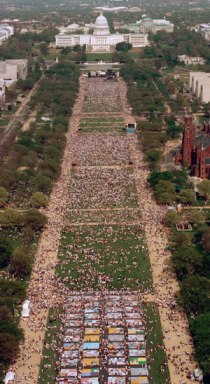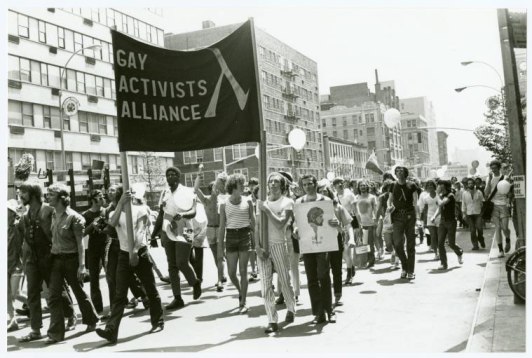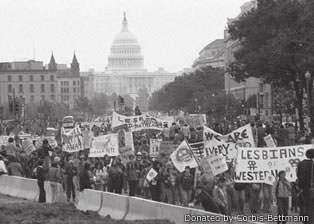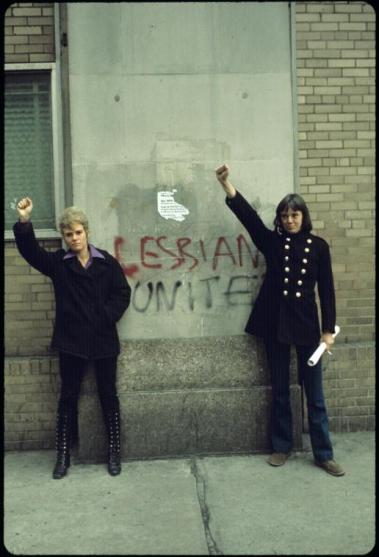Listen up girls, grrrls, women, men, boys, bois and non-gender-identified people!
Autostraddle’s got an announcement to make:
We’re throwing a giant party on the National Mall and everyone should come.
No, kidding, but there is for reals going to be a March on Washington next month for LGBT equality, and y’all should really be there. Autostraddle is going!
First, here’s the breakdown:
What: National Equality March
Where: the National Mall in Washington, DC
When: October 10-11
Why: According to Equality Across America, “Equal protection in all matters governed by civil law in all 50 states. Let our elected leaders know that now is the time for full rights for LGBT people.”
Equal protection includes, but isn’t limited to; a repeal of DOMA, a repeal of DADT, the passage of ENDA to end workplace discrimination, the right of same-sex couples to adopt children and raise families, the passage of hate crimes legislation, immigration reform that recognizes same-sex couples (aka me marrying Intern Emily so she can move freely between Autostraddle headquarters and Canada) and a push for comprehensive anti-bullying policy through the Safe Schools Improvement Act.
The Equality March is slotted to coincide with National Coming Out Day and also marks 30 years since the first National March on Washington for Gay and Lesbian Rights.
Here’s an infographic charting a history of gay rights marches in the U.S and how they stack up against marches led by other groups with similar aims, click to enlarge:
[infographic by intern sarah]
The Evolution of the National Equality March:
Despite getting off to a rough start and being denied official endorsement by major organizations and attracting huge amounts of criticism from the queer press, the National Equality March has managed to attain the support of 140 LGBT leaders and allies. Supporters range from activist Judy Shepard to openly gay Congresswoman Tammy Baldwin and celebrities like Charlize Theron, Dustin Lance Black, Alan Cumming, Ilene Fucking Chaiken, Harvey Fierstein, Melissa Etheridge, Dan Choi, Ian McKellen, Marissa Tomei and Kate Clinton.
The march has also since managed to win over the National Gay and Lesbian Task Force and The Human Rights Campaign, both of which denied official sponsorship in June. The Task Force, which previously shied away from endorsement in favor of focusing on more localized grassroots efforts, is now aiming to connect state equality organizations and community centers. They’re seeking to engage new activists around this central cause in hopes of inspiring participants to continue their efforts at home. The HRC is also hoping to rally hometown support.
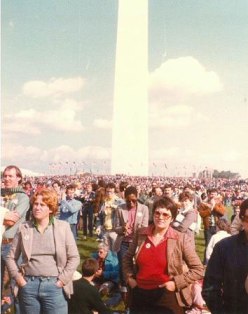 As President Joe Solmonese told the Washington Blade in August, “We’ve been inspired by what Cleve [Jones] has to say about focusing on individual districts and arming people to go back to their districts and be citizen lobbyists.” Recognizing their immense power and influence over the mainstream gay community, the HRC plans to train march participants to initiate in-district lobby visits and have stated they will access whatever resources are needed for the march, though Solmonese notes that the organization considers the Equality March to be “a starting point, not a destination.” Equality Across America has since echoed this statement, calling the March a vehicle to a larger goal, which is to bridge the gap between larger organizations and smaller community-based movements.
As President Joe Solmonese told the Washington Blade in August, “We’ve been inspired by what Cleve [Jones] has to say about focusing on individual districts and arming people to go back to their districts and be citizen lobbyists.” Recognizing their immense power and influence over the mainstream gay community, the HRC plans to train march participants to initiate in-district lobby visits and have stated they will access whatever resources are needed for the march, though Solmonese notes that the organization considers the Equality March to be “a starting point, not a destination.” Equality Across America has since echoed this statement, calling the March a vehicle to a larger goal, which is to bridge the gap between larger organizations and smaller community-based movements.
Other supporting organizations include the GLAAD, Metropolitan Community Churches and Join the Impact — the group that managed to organize, in about a week, the largest LGBT protest in the nation’s history back in November after the passage of Prop 8.
But Is the March on Washington A Bad Idea?
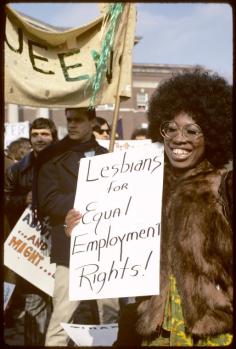 But it’s not all rainbows and unicorns in Marchland. Many members of the gay media have come out (see what I did there?) against the March. Perhaps most noticeable is the Bilerico Project, headed by Bill Browning, who in June published “Ten Reasons Why A March on Washington is a Bad Idea.” And although Cleve Jones was also allowed a column at Bilerico in which he refuted all ten points, the site continued to push criticism of the March, citing the fact that no national LGBT march has ever proven to move legislation and mentioning that ENDA and federal hate crimes bills are already moving through Congress. They also make note of the fact that the Equality March was brainstormed and organized by two gay white men (which of course is so surprising in the LGBT movement), Cleve Jones and David Mixner, and voice fears that this will result in a failure to accurately represent the diversity that exists in the queer community.
But it’s not all rainbows and unicorns in Marchland. Many members of the gay media have come out (see what I did there?) against the March. Perhaps most noticeable is the Bilerico Project, headed by Bill Browning, who in June published “Ten Reasons Why A March on Washington is a Bad Idea.” And although Cleve Jones was also allowed a column at Bilerico in which he refuted all ten points, the site continued to push criticism of the March, citing the fact that no national LGBT march has ever proven to move legislation and mentioning that ENDA and federal hate crimes bills are already moving through Congress. They also make note of the fact that the Equality March was brainstormed and organized by two gay white men (which of course is so surprising in the LGBT movement), Cleve Jones and David Mixner, and voice fears that this will result in a failure to accurately represent the diversity that exists in the queer community.
However, Bill Browning is now listed on the Equality March’s website as a supporter. So …
The Millenium March 2000
Despite the move away from its initial themes of family and spirituality, the March was said to have had an air of hypernormalcy and tones of queer assimilation.
These fears are not unfounded. Many of these same problems were extremely prominent in 2000, when LGBT people gathered in Washington for the Millennium March for equal rights. Although the March drew somewhere between 200,000 and 1 million people, it became a widely criticized event, as many claimed that it lacked inclusiveness and political focus. Despite the move away from its initial themes of family and spirituality, the March was said to have had an air of hypernormalcy and tones of queer assimilation. In addition to this, the March was sponsored by corporate giants like Showtime and United Airlines, causing a schism in the gay community between those eager to receive funding for their cause and those who felt that corporate sponsorship was nothing but tactless commercialism from organizations that only wished to monetize the gay community. But that raises another interesting dilemna, because it is when a group seems to be worth marketing money that the country — and its politicians — are forced to pay attention.
The Village Voice cited a different reason for the failure of the Millennium March. It was not the struggle that had changed, it was us. The gay generation gap was real. “These millennial queers came of age in a country where being gay is a battleground, but not an internalized source of shame that must be bravely overcome,” wrote Richard Goldstein in the 2000 article. “They grew up in a media-saturated world that invites them to anticipate legitimacy, not liberation.”
So what’s a gay (bisexual, or otherwise inclined person) to do?
No one can say for sure how this is all going to go down, but we can make sure we know what we’re fighting for. History tells us that we shouldn’t hope for this protest to move legislation, but if nothing else it has the potential to be a statement of solidarity and an opportunity for grassroots organizations to meet up and exchange ideas. Like a big gay colloquium. With a lot of walking and picket signs.
Maybe the Village Voice was right, we’re not the same queers of yesteryear, but that doesn’t mean we haven’t got it in us to make a scene. Our predecessors fought for our liberation, now it’s up to us to fight for our rights.
![]()




